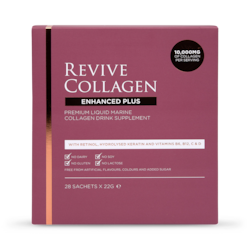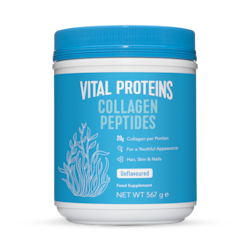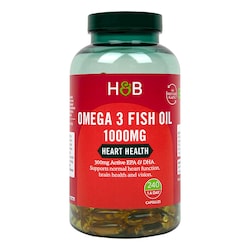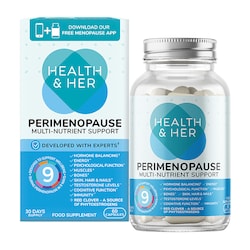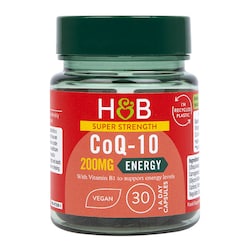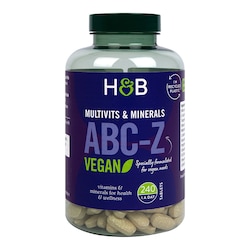20% off £30
What is vitamin K2?

Most of us have heard of Vitamins C and D, as well as many others. But what about Vitamin K2, how familiar are you with that one?
This particular vitamin isn’t one of the more-talked-about vitamins, but that doesn’t make the role it has on the human body any less important.
Over the next few paragraphs, we’re going to talk you through Vitamin K2, as well as answer these commonly-asked questions:
- What is Vitamin K2 good for?
- Which foods are high in Vitamin K2?
- Is too much Vitamin K2 bad for you?
What is Vitamin K?
Before we talk about Vitamin K2, it’s important we briefly introduce you to its main counterpart, Vitamin K, which isn’t just one standalone vitamin.
Vitamin K is responsible for making sure our blood clots properly by producing proteins that enable this to happen. Without Vitamin K in our system, our blood would take a very long time to clot and wounds potentially may not heal properly. It’s also believed Vitamin K can help with bone health among older people.1
Vitamin K is measured in micrograms and the amount we need in our bodies varies depending on how old we are.2
Daily recommended Vitamin K intake
| Age | Amount (a day) |
|
Birth - 6 months |
2.0 micrograms |
| 7 - 12 months | 2.5 micrograms |
| 1 - 3 years | 30 micrograms |
| 4 - 8 years | 55 micrograms |
| 9 - 13 years | 60 micrograms |
| 14 - 18 years | 75 micrograms |
| Adult men (19 and over) | 120 micrograms |
| Adult women (19 and over) | 90 micrograms |
| Pregnant or breastfeeding teens | 75 micrograms |
| Pregnant or breastfeeding women | 90 micrograms |
Summary
Vitamin K plays a key role in blood clotting and wound healing, as well as good bone health among older adults. The recommended daily intake of Vitamin K ranges from 2 micrograms to 120 micrograms, depending on how old you are.
Which foods are high in Vitamin K2?
Like most vitamins, Vitamin K is present in certain food. Overall, the NHS says that Vitamin K’s mainly present in green leafy veg, vegetable oils, cereal grains and a small selection of meat and dairy food.3
Here are some further examples of Vitamin K food sources4:
| Food | Vitamin K content (in micrograms) |
| 1/2 cup of kale | 225 |
| 1/2 cup of raw spinach | 75 |
| 1/2 cup of turnip greens | 70 |
| 1/2 cup of broccoli | 45 |
| 1/2 cup of cabbage | 30 |
| 1 tbsp of soybean oil | 25 |
| 1 cup of iceberg lettuce | 14 |
| 1 cup of strawberries | 4 |
| 1 cup of whole milk | 1 |
| 1 large egg | <1 |
For more Vitamin K food examples, check out this article, ‘30+ Vitamin K foods.’
Summary
Green leafy veg, vegetable oils and cereal grains, as well as a whole host of even more food sources, all contain Vitamin K. There’s also a group of foods that are considered as being particularly high in Vitamin K2 (see below).
What is Vitamin K2?
Vitamin K2 is one of the vitamins that sits within the overall Vitamin K group.
Vitamin K exists in two main forms:
Type 1: Vitamin K1, also known as phylloquinone
This form of Vitamin K is mainly found in plant foods, e.g. those listed above.
Type 2: Vitamin K2, also known as menaquinone
This form is present in animal and fermented foods. A small amount of it’s also produced naturally by human gut bacteria by turning Vitamin K1 into Vitamin K2.
In addition to Vitamin K1 and Vitamin K2, there are lots of Vitamin K2 sub-groups that have been named, depending on the length of their side chain. They range from MK-4, right up to MK-13.5
MK-4 is present in some animal products and is the only form of Vitamin K2 that isn’t produced by bacteria. Examples of MK-4 include egg yolks and butter.
Meanwhile, MK-5 up to MK-15 have longer side chains, are produced by bacteria and are often present in fermented foods. For instance, Natto, is made from fermented soybeans and is high in MK-7.
Summary
Vitamin K2, which is also known as menaquinone, is present in both animal and fermented foods. A small amount of it is also produced naturally by human gut bacteria by turning Vitamin K1 into Vitamin K2.
What is Vitamin K2 good for?
Vitamin K2 has two specific roles within the human body that relate to our bones and blood vessels.6
1. Within our blood vessels – it activates a protein called Matrix Gla-protein, which is responsible for removing calcium from the lining of blood vessels. This is important for heart health, as calcification of blood vessels is a risk factor for heart disease.
2. Within our bones - it activates osteocalcin, a bone-forming protein. It is an important nutrient for bone health because it helps our bones draw calcium from our blood vessels and turn it into bone tissue.
Vitamin K2 reportedly has more widespread benefits than its other Vitamin K counterparts, particularly Vitamin K1. One of the main benefits is that it can stay stored in the liver for up to 72 hours, compared to Vitamin K1, which usually leaves the liver within eight hours.7
Other Vitamin K2 benefits include:
- Vitamin K2 is good for heart health
Vitamin K2 helps to direct calcium to the bones and prevent it from being deposited where it shouldn't be, for example arteries and organs, where it can cause harm.8 According to The Rotterdam Study research, in which men were studied for more than 15 years, the highest intake of Vitamin K2 was linked with a lower risk of heart-related issues, including cardiovascular disease, and cardiovascular disease mortality.9
- It’s good for bone health
Vitamin K3 activates the proteins that help regulate calcium deposition. This means that it supports the calcification of bones and prevents calcium deposits from forming in the blood vessels.10 A study of Japanese postmenopausal women, who ate Natto, found that they experienced lower bone loss over time.11
- And dental health too
Due to the fact the protein that’s needed to build strong teeth, osteocalcin, is the same one activated by Vitamin K2 to regulate bone calcification. However, it’s important to flag here that research in relation to this particular benefit is limited at present.12 (For more information about the fundamentals of dental health, have a read of this, ‘Calcium and dental health.’)
Summary
Several health benefits have been linked to Vitamin K2. They range from helping prevent heart disease and maintaining healthy bones, to building strong teeth.
How can I get Vitamin K2 naturally?
Quite simply, by eating more Vitamin K2-rich food.
But here’s the thing, while guidance on daily Vitamin K supplements currently exists (as set out above) and the NHS says adults need around 1 microgram (mcg) a day of Vitamin K for each kilogram of their body weight, there’s no guidance in relation to daily Vitamin K2 intake levels at present.
It may be that you introduce just one or two Vitamin K2 foods to your daily diet, or you opt for several different things. Of all the food sources, these contain the highest levels of K2:
Vitamin K2 foods
1. Natto (fermented soy)
Natto happens to have extremely high Vitamin K2 levels. It reportedly contains around 15 times more Vitamin K2 than the best hard cheese sources and 200 times more than the fermented cabbage dish, sauerkraut.13
2. Dark meat
For example, the darker parts of chicken, such as the leg or the thigh.
3. Fermented cheeses
Cheese like Edam, Gouda or cheddar and blue cheese all contain lots of Vitamin K2 that’s been created by bacteria during the production process.
4. Egg yolks
Poached or hard boiled, however you have them, egg yolks in particular are a good source of Vitamin K2.14
Note – Milk and butter that’s produced by grass-fed cows reportedly contains more Vitamin K2 than milk and butter that’s produced by cows that eat grains. The level of Vitamin K2 in cheese depends on what’s produced by the cheese cultures.15
Summary
It’s possible to boost Vitamin K2 levels naturally by eating lots of Vitamin K2 foods. You may want to eat them in moderation though because there’s currently no guidance on daily intake levels for Vitamin K2.
Is too much Vitamin K2 bad for you?
While evidence of the impact of having too much Vitamin K in our systems remains limited right now, it’s still important you make sure you don’t exceed the recommended daily intake levels.
The NHS says it’s important, and possible, to get sufficient quantities of Vitamin K by eating a healthy and balanced diet that contains food sources, such as those listed above.17
Being deficient in Vitamin K is a rare thing, but if your levels are depleted, then it is possible to take a supplement to help increase them. Vitamin K is also available in supplements that contain just Vitamin K or Vitamin K combined with other nutrients, such as calcium, magnesium, and/or vitamin D.18
The most common types of Vitamin K supplements are:
1. Phylloquinone and phytonadione (AKA Vitamin K1)
2. Menaquinone-4, and menaquinone-7 (AKA Vitamin K2).
Summary
It’s not yet clear what too much Vitamin K2 can do to the body; more research is required to clarify the consequences. If you are low in Vitamin K2, you should be able to raise your levels by eating Vitamin K2 foods or by taking a supplement.
A final few words about Vitamin K2
When it comes to making sure our bodies function properly, Vitamin K2 is incredibly important. Without it, our blood wouldn’t clot, our bones wouldn’t develop as they should, or stay healthy and strong, and any wounds would heal with great difficulty. Vitamin K2 is right up there in terms of making sure some of the fundamental workings of the human body take place.
While Vitamin K2 isn’t one of the more common vitamins to be lacking in, deficiencies can occur. Vitamin K2 levels can be increased either by eating Vitamin K2 foods or taking supplements. If you are planning on doing the latter, check with your GP first before you do so to identify the cause of your deficiency and make sure you’re taking the right amount of Vitamin K2 for you.
For more information about Vitamin K, particularly in relation to babies, check out this article, ‘Vitamin K for babies.’
Last updated: 5 March 2021
- https://medlineplus.gov/vitamink.html
- https://ods.od.nih.gov/factsheets/VitaminK-Consumer/
- https://www.nhs.uk/conditions/vitamins-and-minerals/vitamin-k/
- https://edis.ifas.ufl.edu/pdffiles/FY/FY20900.pdf
- https://www.kappabio.com/brochures/different-forms-of-k/
- https://khni.kerry.com/news/blog/what-is-vitamin-k2-and-what-role-does-it-have-in-health/
- https://www.bbc.co.uk/news/magazine-24049950
- https://www.bbc.co.uk/news/magazine-24049950
- https://kresserinstitute.com/vitamin-k2-consuming-enough/
- https://www.healthy-magazine.co.uk/vitamin-k2/
- https://kresserinstitute.com/vitamin-k2-consuming-enough/
- https://www.healthy-magazine.co.uk/vitamin-k2/
- https://www.nyrture.com/blog/natto-and-vitamin-k2
- https://kresserinstitute.com/vitamin-k2-consuming-enough/
- https://kresserinstitute.com/vitamin-k2-consuming-enough/
- https://www.nhs.uk/conditions/vitamins-and-minerals/vitamin-k/
- https://ods.od.nih.gov/factsheets/VitaminK-Consumer/


